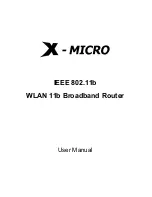
1-38
To do...
Use the command...
Remarks
Enable BPDU dropping for the
port(s)
bpdu-drop any
Required
Disabled by default
Displaying and Maintaining MSTP
To do...
Use the command...
Remarks
View information about abnormally
blocked ports
display stp abnormal-port
Available in any view
View information about ports blocked
by STP protection functions
display stp down-port
Available in any view
View the historical information of port
role calculation for the specified MSTI
or all MSTIs
display stp
[
instance
instance-id
]
history
Available in any view
View the statistics of TC/TCN BPDUs
sent and received by all ports in the
specified MSTI or all MSTIs
display stp
[
instance
instance-id
]
tc
Available in any view
View the status information and
statistics information of MSTP
display stp
[
instance
instance-id
]
[
interface
interface-list
]
[
brief
]
Available in any view
View the MST region configuration
information that has taken effect
display stp region-configuration
Available in any view
View the root bridge information of all
MSTIs
display stp root
Available in any view
Clear the statistics information of
MSTP
reset stp
[
interface
interface-list
] Available in user view
MSTP Configuration Example
Network requirements
z
All devices on the network are in the same MST region. Device A and Device B work on the
distribution layer, while Device C and Device D work on the access layer.
z
Configure MSTP so that packets of different VLANs are forwarded along different spanning trees:
Packets of VLAN 10 are forwarded along MSTI 1, those of VLAN 30 are forwarded along MSTI 3,
those of VLAN 40 are forwarded along MSTI 4, and those of VLAN 20 are forwarded along MSTI 0.
z
VLAN 10 and VLAN 30 are terminated on the distribution layer devices, and VLAN 40 is terminated
on the access layer devices, so the root bridges of MSTI 1 and MSTI 3 are Device A and Device B
respectively, while the root bridge of MSTI 4 is Device C.
















































